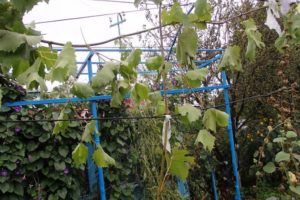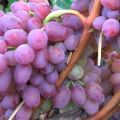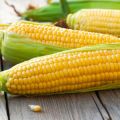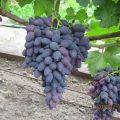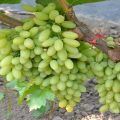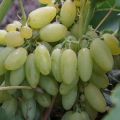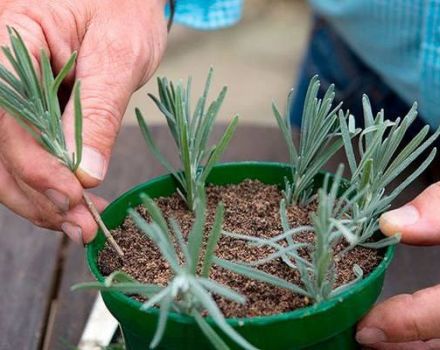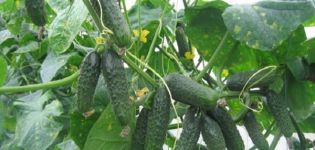Description and characteristics of the Attica grape variety and the rules for growing raisins
Breeders all over the world are working on improving grape varieties, and often the result of their work becomes known and popular not only in their homeland, but also far beyond its borders. So it happened with the Attica grape variety. Despite its Greek origin, today it can be found on the sites of gardeners throughout Europe and the CIS countries. And all this is due to its characteristics and unpretentious care.
The history of breeding the variety Attica
The seedless hybrid is the fruit of the labor of the Greek breeder Mihos. The hybrid was based on two varieties: Central Asian Black Kishmish and French Alphonse Lavalle. For the first time this variety of raisins was presented to the court of winegrowers in 1979 and immediately received their recognition. The hybrid successfully combines the best characteristics of the parent varieties, but the shortcomings are practically not transferred to the new variety.
Appearance and botanical description
In order to have a complete understanding of the Attica grape variety, they study its description and characteristics and, on the basis of this, draw a conclusion: is a hybrid suitable for cultivation in a certain region or not.
Bush and shoots
The bushes of Attica are predominantly medium and vigorous, young shoots are characterized by good ripening per season. For abundant fruiting, it requires pruning, pinching and removal of stepsons. For cultivation, it is recommended to prepare supports so that the grapes have a rich flavor and receive sufficient sunlight.
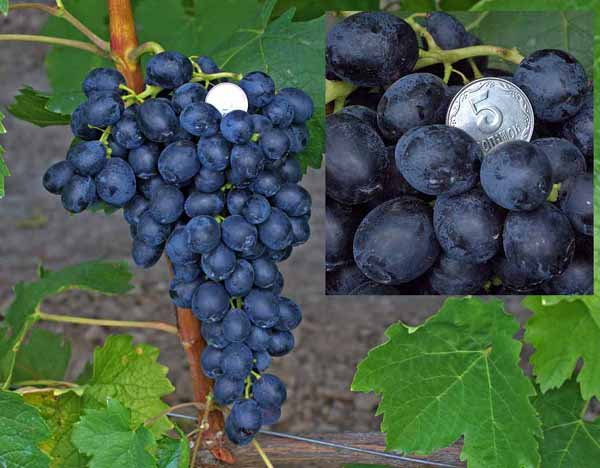
Leaves, inflorescences
The leaves of the Attica hybrid are five or three-lobed, have a rich green color. The surface of the leaf plate is dull, slightly dissected, there is a slight pubescence below. Due to the fact that both female and male flowers bloom in Attica, pollinating varieties are not needed.
Already in the first year after planting, the gardener will be able to harvest the first crop, which will only increase annually.
Bunches and berries
Cylindrical bunches of Attica grapes, with proper care, reach a weight of 2 kg. The density of the hybrid's brushes is high, but this does not prevent the berries from fully ripening during the season. The berries of the variety have an easily recognizable taste, which combines the sweetness of grapes and the taste of cherries. The weight of one reaches 6 grams.The color is inky blue, at the end of the fruit there is a dimple characteristic of the variety.
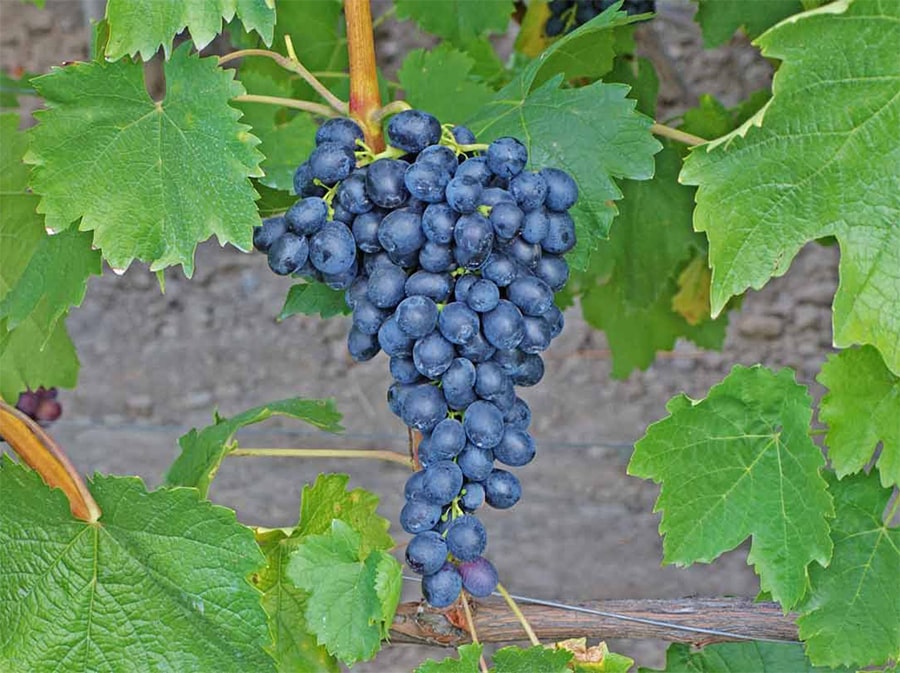
All berries are covered with a waxy bloom, crunchy flesh when bitten. The main advantage of Attica berries is the lack of seeds.
Qualitative characteristics of the hybrid
Attica belongs to the table species that gardeners grow both for personal needs and for subsequent sale. The percentage of sugars is up to 18, the acidity is at the level of 5 g / l.
Suitable climatic conditions
A native of warm Greece, he loves the climate of the southern regions of Russia and Ukraine, takes root well in the Crimea and Moldova. But in the northern regions with frosty winters, it will die. When grown in the middle lane, shelter is required for the winter.

The beginning of fruiting and yield
The Attica hybrid belongs to varieties with early ripening of berries. In southern latitudes (for example, in Spain), the first bunches reach ripeness in early July. In colder climates, the grapes are harvested in early August. On average, 110 to 120 days pass before harvesting. Another indisputable advantage of Attica is its high yield.
With proper care, up to 30 tons of tasty and healthy berries are harvested per hectare. However, the variety is prone to being overloaded with berries, experienced gardeners recommend leaving no more than 30 eyes in order not to damage the vine.
Disease resistance
The disadvantage of Attica is considered to be low resistance to fungal diseases, especially in cold and damp climates. But insect pests rarely infect a vine. Also, the hybrid has a high immunity to gray rot.
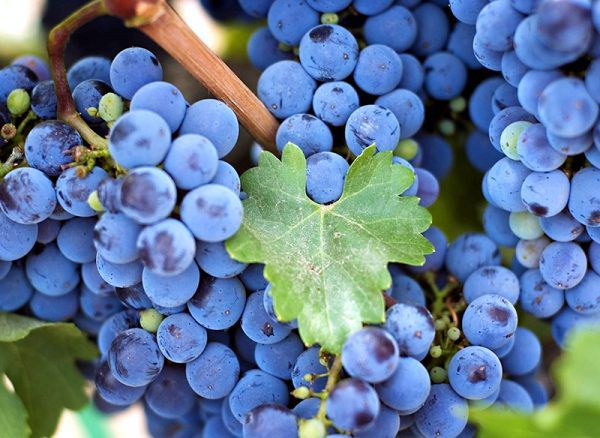
Frost resistance
The frost resistance of the Attica hybrid is at the level of -21 degrees. At lower temperatures, the bush can freeze and die.
Planting and growing
The field health of Attica and the amount of the crop depend on the observance of agricultural technology for growing a hybrid. When cultivating, difficulties do not arise even for novice winegrowers.
Ground requirements
An unpretentious variety develops on almost any type of soil. Only wetlands and salt marshes are not suitable. Good yields are achieved on light sandy loam soils.
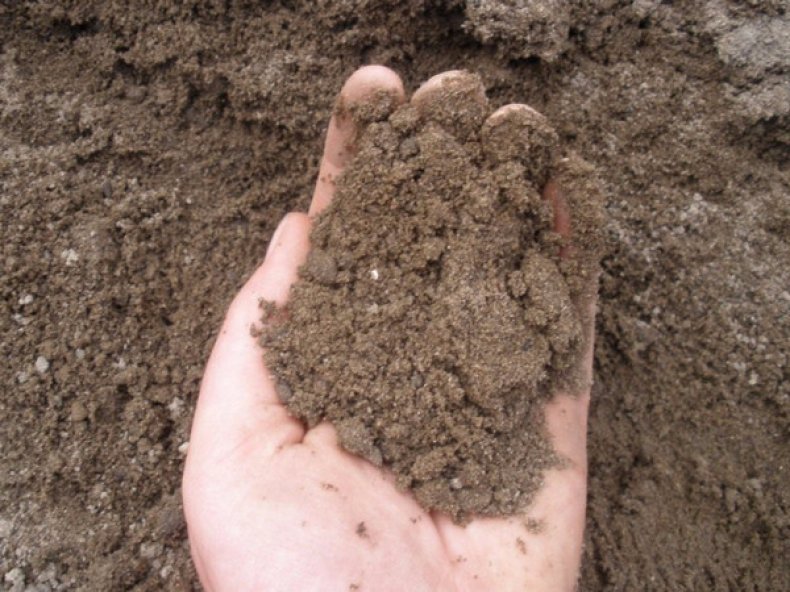
Landing scheme
The landing algorithm is simple and consists of several stages:
- To begin with, they acquire high-quality planting material. It is better to do this in specialized nurseries, so there are more chances to buy a seedling of this particular variety, and not a fake.
- A young seedling should have a developed root system (up to 3 roots) without signs of mechanical damage.
- On the site, a place is selected, illuminated from all sides by the sun. The hybrid Attica is not planted in drafts, in lowlands and places with a close occurrence of groundwater.
- The size of the planting pit depends on the size of the seedling root system. You should not bury a young bush more than 50 cm.
- The soil selected from the hole is thoroughly mixed with organic matter and complex mineral dressings.
- Drainage from crushed stone or broken red brick is made at the bottom of the hole.
- The soil is filled with fertilizers and a seedling is placed on it.
- Winegrowers are advised to dip the root system of the grapes in a clay mash before planting.
- Next, sprinkle with the remaining earth and tamp it well.
- Water and mulch abundantly.
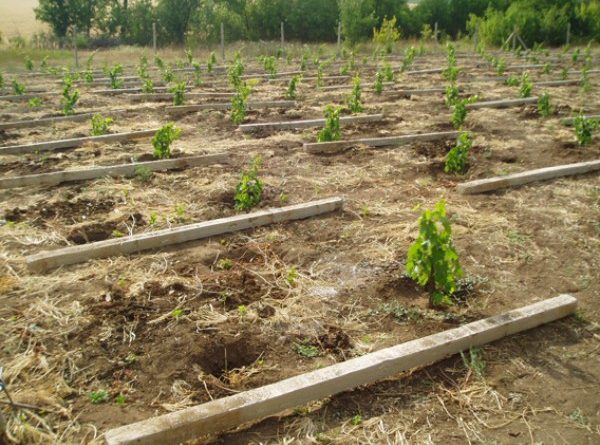
The distance between young seedlings should be at least 2 meters.
Irrigation and feeding
To obtain the harvest declared by the manufacturer, timely watering and feeding is important. Grapes cannot stand waterlogging, but dry soil does not contribute to the full development of the vine. Watering is especially important at the time of pouring the berries. In the first year, the Attica grape bush has enough nutrition introduced during planting.In the future, the bushes are fertilized three times per season: in the spring (nitrogen-containing compounds), in the summer (potash and phosphorus) and in the fall (organic).
Pinching and trimming
Experienced gardeners recommend be sure to pinch green shoots a few days before flowering. Then all the forces of the grapes will be directed to the formation of large bunches. Formative and sanitary pruning is also necessary.

Seasonal processing
During the season, grape bushes are treated twice with fungicidal preparations for preventive purposes. You can use folk remedies for this.
Shelter for the winter
A heat-loving hybrid needs additional protection for the cold season. Mandatory mulching with peat and sawdust, as well as a greenhouse-type construction.
The ripening period of berries and the duration of storage of the crop
Ripening of the brushes of Attica falls mainly in August, the specific dates depend on the climatic features of the region. The advantage of the hybrid berries is considered to be good keeping quality and long shelf life without loss of presentation and taste characteristics.
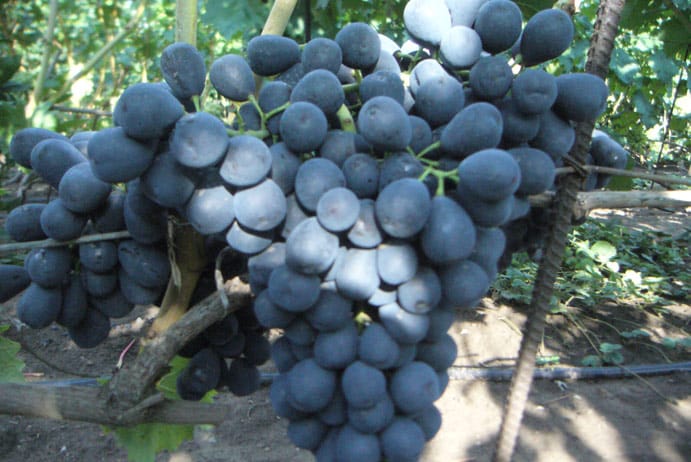
There is also a good transportability of the crop, which makes it possible to grow Attica on an industrial scale.
Diseases and pests - ways to deal with them
Pests such as aphids, leaf rollers and wasps rarely damage the crops of Attica. As a preventive measure, it is recommended to set traps and carry out seasonal spraying with fungicides.
Of all types of fungal diseases, Attica has immunity only to gray rot. Other diseases are prevented with the help of proper agricultural technology and periodic treatments with preparations of the fungicidal category. If the plant does get sick, more aggressive chemistry is used to save the vine from death.
